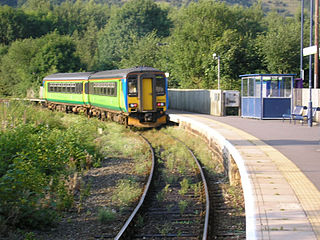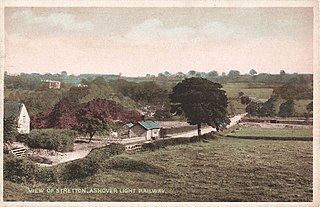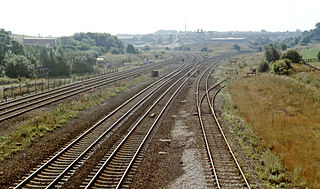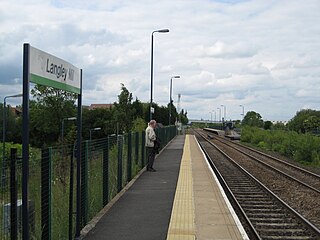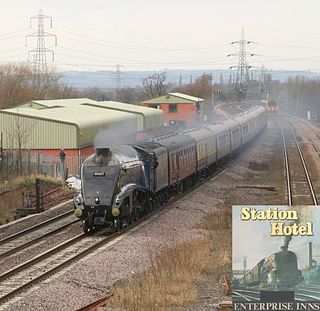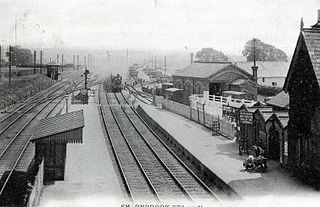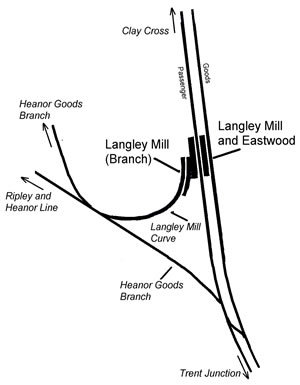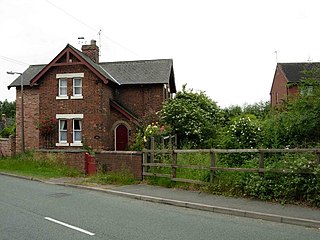Ripley | |
|---|---|
 Modern pathway through the site of the station to the south of Nottingham Road in 2011 | |
| General information | |
| Location | Ripley, Amber Valley England |
| Coordinates | 53°03′01″N1°24′05″W / 53.0502°N 1.4014°W |
| Platforms | 2 |
| Other information | |
| Status | Disused |
| History | |
| Original company | Midland Railway |
| Pre-grouping | Midland Railway |
| Post-grouping | London Midland and Scottish Railway |
| Key dates | |
| 1 September 1856 | Station opens [1] |
| 2 September 1889 | replaced by new station [1] |
| 1 June 1930 | Station closes to regular traffic for passengers [1] |
| 1 April 1963 | Station closed for goods |
Ripley railway station was a railway station which served the town of Ripley in Derbyshire, England. It was opened in 1856 by the Midland Railway on its Ripley branch from Little Eaton Junction, approximately 3 miles north of Derby. In 1890 it became the terminus of a line from Heanor Junction on the Erewash Valley Line near Langley Mill.

Approximately two and a half miles from Denby the line crossed the main Ripley Road at Marehay and reached the original station immediately to the south of Peasehill Road, around 1 km south of the town centre.
In 1889 a new line was built from Langley Mill through Heanor and Crosshill. A new station was built nearer to the town centre since it was planned to extend the line to meet the Ambergate to Pye Bridge Line at Butterley. The original station became known as the Old Yard and provided goods facilities. [2]
The new station, to the south of Nottingham Road and in a deep cutting, was double tracked with two platforms provided with matching single storey buildings.
In the Grouping of all lines (into four main companies) in 1923 the station became part of the London, Midland and Scottish Railway . The station closed to passengers in 1930, though it continued with a very lively goods trade for the town's shops and businesses. There were also regular excursions, for instance to the FA Cup Final organised by the Miners Welfare, and the annual week at the holiday camp at Skegness, taken by over a thousand miners and their families. On 12 October 1961 the station featured on the ITV programme Lunchbox. Midland Railway Number 1000 brought 500 spectators from Derby.
The line north of Ripley to Butterley had closed on 23 January 1938. That going north from Marehay Junction closed in 1954 along with the Old Yard. The station finally closed to goods on 1 April 1963.
The station buildings were finally demolished around 1985 and part of the site was occupied by a builders merchant's warehouse.

